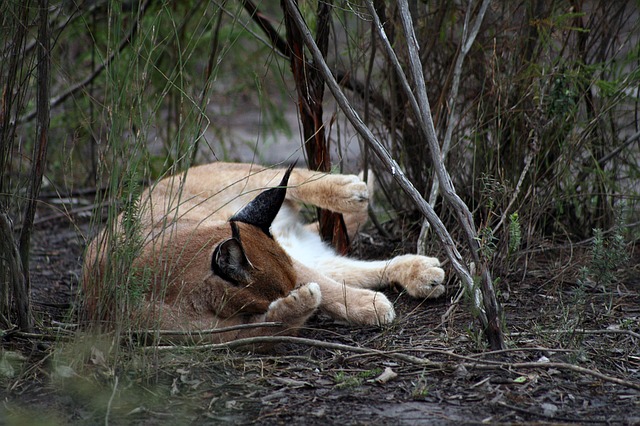Urban rat poisons are entering into Cape Town’s natural environment and threatening species such as the caracal, mongoose, otter and owl, a team of University of Cape Town (UCT) researchers in the Institute for Communities and Wildlife in Africa (iCWild) has discovered.
In a recent paper published in the journal Science of the Total Environment, researchers found that anticoagulant rat poisons are infiltrating Cape Town’s peri-urban wildlife food chains. The study, believed to be the first of its kind, was conducted within and around Table Mountain National Park.
These animals already face challenges such as habitat loss, vehicle collisions, poachers, and fire, says lead author of the paper, Dr Laurel Serieys, a postdoctoral research fellow at the iCWild.
The researchers for the paper identified six predator species at risk of being affected by rat poisons: the caracal, Cape clawless otter, Cape Eagle Owl, large spotted genet, honey badger and water mongoose. Others not researched are likely affected as well,
The study measured the presence and concentration of rat poison compounds in the liver and blood samples of 41 animals, with a special focus on caracal as part of the Urban Caracal Project (UCP). At 92%, exposure to rat poison was the highest for caracal. Overall, they found 81% exposure across seven species tested. The predators aren’t eating the poisons directly. Rather, the poisons are designed to work slowly in their target species, rats, who become sick over a period of days and end up as easy prey for predators.
“We detected at least one of the four most toxic rat poison compounds, all available in over-the-counter products, in six of the seven species tested,” says Dr Jacqueline Bishop, lead supervisor on the project. Caracals living in or near vineyards had the highest exposure to rat poisons but the route to exposure is unclear.
“Vineyards in Cape Town don’t use rat poisons to protect their vines, but they do host restaurants, spas and hotels and occur adjacent to dense residential areas where rat poisons are widely used. Caracals regularly hunt in vineyards and it is here that they are likely to be exposed to poisoned rats, in and around urban structures,” she says.
The researchers focused their poison testing on caracal but were also able to opportunistically test several other species that had died from being hit by cars.
The fact that all these species live in different habitats shows that rat poisons may profoundly impact various species. “It also suggests, in the case of otters, that polluted water runoff from urban areas could transport the poisons into Cape Town’s waterways and the aquatic food chain,” says Dr Nicola Oakes, one of the paper’s collaborators.
“There is mounting evidence globally that rat poisons are a critical threat to wildlife, including threatened and endangered species. To really understand this problem locally has taken support from the public, from SANParks and the City of Cape Town in reporting the locations of animals hit by cars so they could be included in our study,” says Dr Okes.
One of the most significant findings of the study is that exposure occurs at all ages. Several lactating female caracals were sampled in the study and found to be exposed to rat poisons, suggesting that kittens may be exposed through their mother’s milk. The UCP has grown into a large-scale research program that sparks a lot of community interest. Members of the community can interface directly with the researchers and contribute to their work by reporting caracal sightings and learning about the project’s development through its Facebook page.
The project has also garnered international interest from researchers wanting to contribute to the research team’s efforts to identify the many threats to Cape Town’s caracals and strategise effective conservation of these elusive cats. The researchers hope their study’s findings will stimulate a dialogue on how to reduce environmental contamination by rat poisons and other toxins and help pinpoint directions for targeted mitigation.
“As consumers, we need more eco-friendly alternatives to rat poison and the simplest solution is well within everyone’s reach – improve the management of waste which attracts rats in the first place.”
Picture: Pixabay

